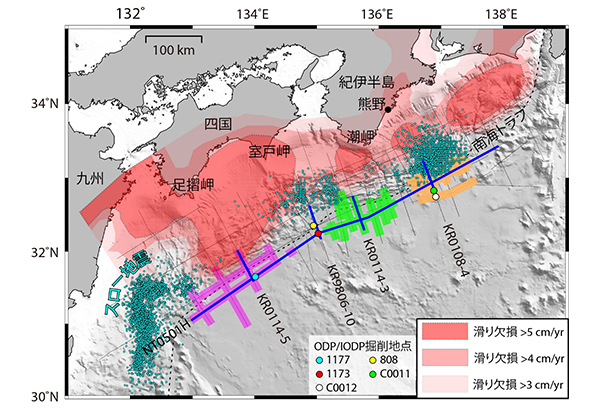- 新しい地質学的エポックの定義に向けた大きな一歩を発表
Researchers announce major step towards defining a new geological epoch
- 証拠と実験 人新世地質学の文脈をキュレーションする: Evidence and experiment: Curating contexts of Anthropocene geology
- カナダ、オンタリオ州、ミルトンのクロフォード湖のヴァーブド・サーセッションは、人新世シリーズの地球境界層型セクションとポイントの候補である。 The varved succession of Crawford Lake, Milton, Ontario, Canada as a candidate Global boundary Stratotype Section and Point for the Anthropocene series
新しい地質学的エポックの定義に向けた大きな一歩を発表 Researchers announce major step towards defining a new geological epoch
2023-07-11 マックス・プランク研究所
◆今回、国際的な地質学ワーキンググループがこのギャップに対処することに成功した。将来的には、カナダの小さな湖が、人類の時代への移行を示す地質学的な証拠保管場所として指定されることになるだろう。マックス・プランク協会は、人新世の研究を推進する上で重要な役割を果たし、ワーキンググループの取り組みに貴重な洞察を提供してきた。
<関連情報>
- https://www.mpg.de/20614579/crawford-lake-anthropocene?c=2249
- https://journals.sagepub.com/doi/10.1177/20530196231165621
- https://journals.sagepub.com/doi/10.1177/20530196221149281
証拠と実験 人新世地質学の文脈をキュレーションする: Evidence and experiment: Curating contexts of Anthropocene geology
Christoph Rosol , Georg N Schäfer , Simon D Turner , Colin N Waters, Martin J Head, Jan Zalasiewicz, Carlina Rossée, Jürgen Renn, Katrin Klingan, and Bernd M Scherer
The Anthropocene Review Published:March 25, 2023
DOI:https://doi.org/10.1177/20530196231165621

Abstract
Together with research teams from around the world, the Anthropocene Working Group (AWG) has been meticulously quantifying and scrutinizing the global stratigraphic imprint of human activities, the results of which are gathered in this thematic collection of papers in The Anthropocene Review. How can such empirical research, which so impressively articulates the end of a relatively stable Earth System in the mid-20th century, inform our ways of understanding and responding to the planetary crisis that the geological samples quietly represent? In this afterword to the collection we report and reflect on the joint undertaking of the AWG, Haus der Kulturen der Welt and the Max Planck Institute for the History of Science to bring geoscientific evidence, cultural experimentation and historical contextualization together in a shared public framework.
カナダ、オンタリオ州、ミルトンのクロフォード湖のヴァーブド・サーセッションは、人新世シリーズの地球境界層型セクションとポイントの候補である。 The varved succession of Crawford Lake, Milton, Ontario, Canada as a candidate Global boundary Stratotype Section and Point for the Anthropocene series
Francine MG McCarthy, R. Timothy Patterson, Martin J Head, Nicholas L Riddick, Brian F Cumming, Paul B Hamilton, Michael FJ Pisaric, A. Cale Gushulak, Peter R Leavitt, Krysten M Lafond, Brendan Llew-Williams, Matthew Marshall, Autumn Heyde, Paul M Pilkington, Joshua Moraal, Joseph I Boyce, Nawaf A Nasser, Carling Walsh, Monica Garvie, Sarah Roberts, Neil L Rose, Andy B Cundy, Pawel Gaca, Andy Milton, Irka Hajdas, Carley A Crann, Arnoud Boom, Sarah A Finkelstein, John H McAndrews, and other members of Team Crawford
The Anthropocene Review Published:February 16, 2023
DOI:https://doi.org/10.1177/20530196221149281

Abstract
An annually laminated succession in Crawford Lake, Ontario, Canada is proposed for the Global boundary Stratotype Section and Point (GSSP) to define the Anthropocene as a series/epoch with a base dated at 1950 CE. Varve couplets of organic matter capped by calcite precipitated each summer in alkaline surface waters reflect environmental change at global to local scales. Spheroidal carbonaceous particles and nitrogen isotopes record an increase in fossil fuel combustion in the early 1950s, coinciding with early fallout from nuclear and thermonuclear testing – 239+240Pu and 14C:12C, the latter more than compensating for the effects of old carbon in this dolomitic basin. Rapid industrial expansion in the North American Great Lakes region led to enhanced leaching of terrigenous elements by acid precipitation during the Great Acceleration, and calcite precipitation was reduced, producing thin calcite laminae around the GSSP that is marked by a sharp decline in elm pollen (Dutch Elm disease). The lack of bioturbation in well-oxygenated bottom waters, supported by the absence of fossil pigments from obligately anaerobic purple sulfur bacteria, is attributed to elevated salinities and high alkalinity below the chemocline. This aerobic depositional environment, highly unusual in a meromictic lake, inhibits the mobilization of Pu, the proposed primary stratigraphic guide for the Anthropocene.



